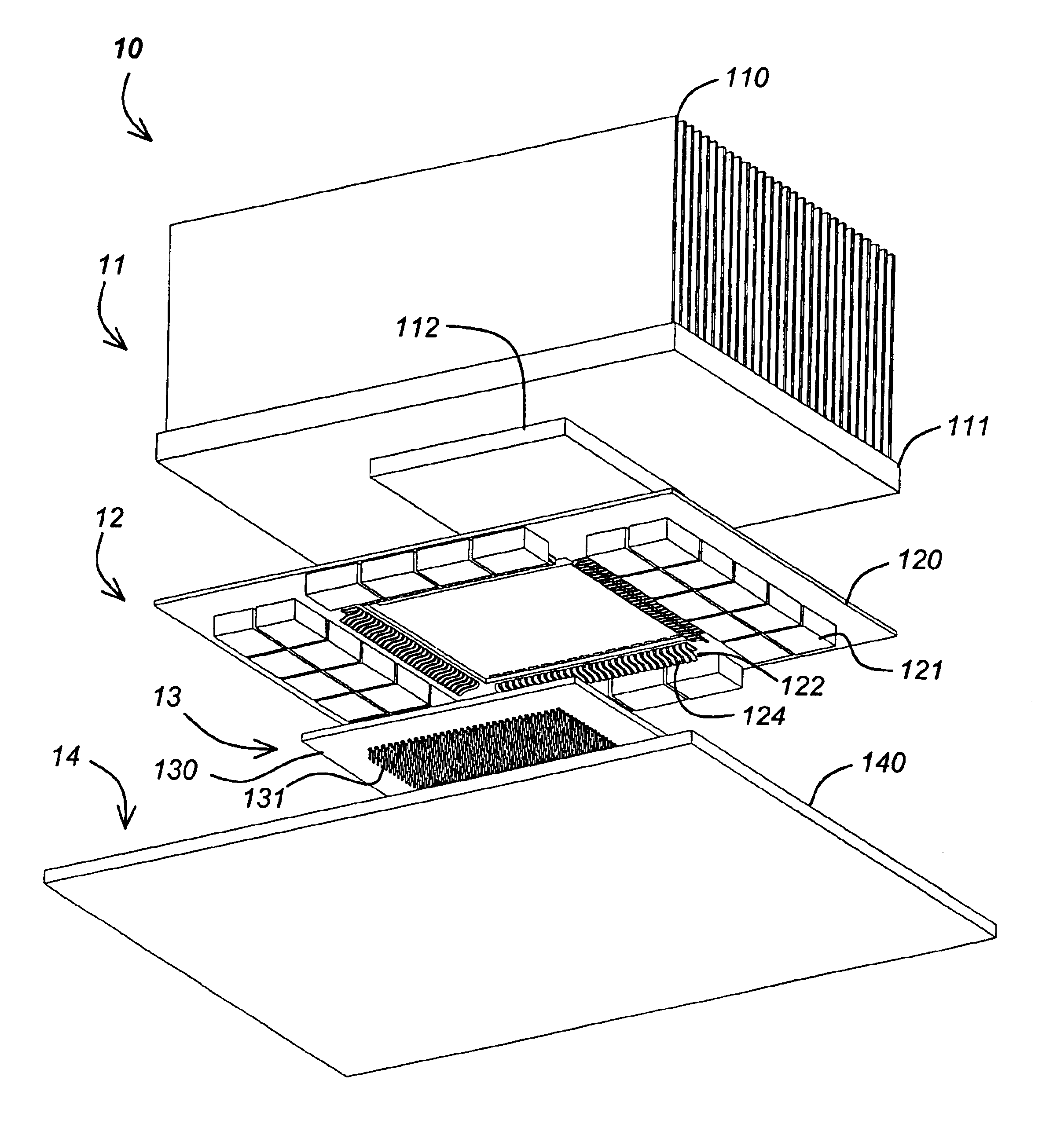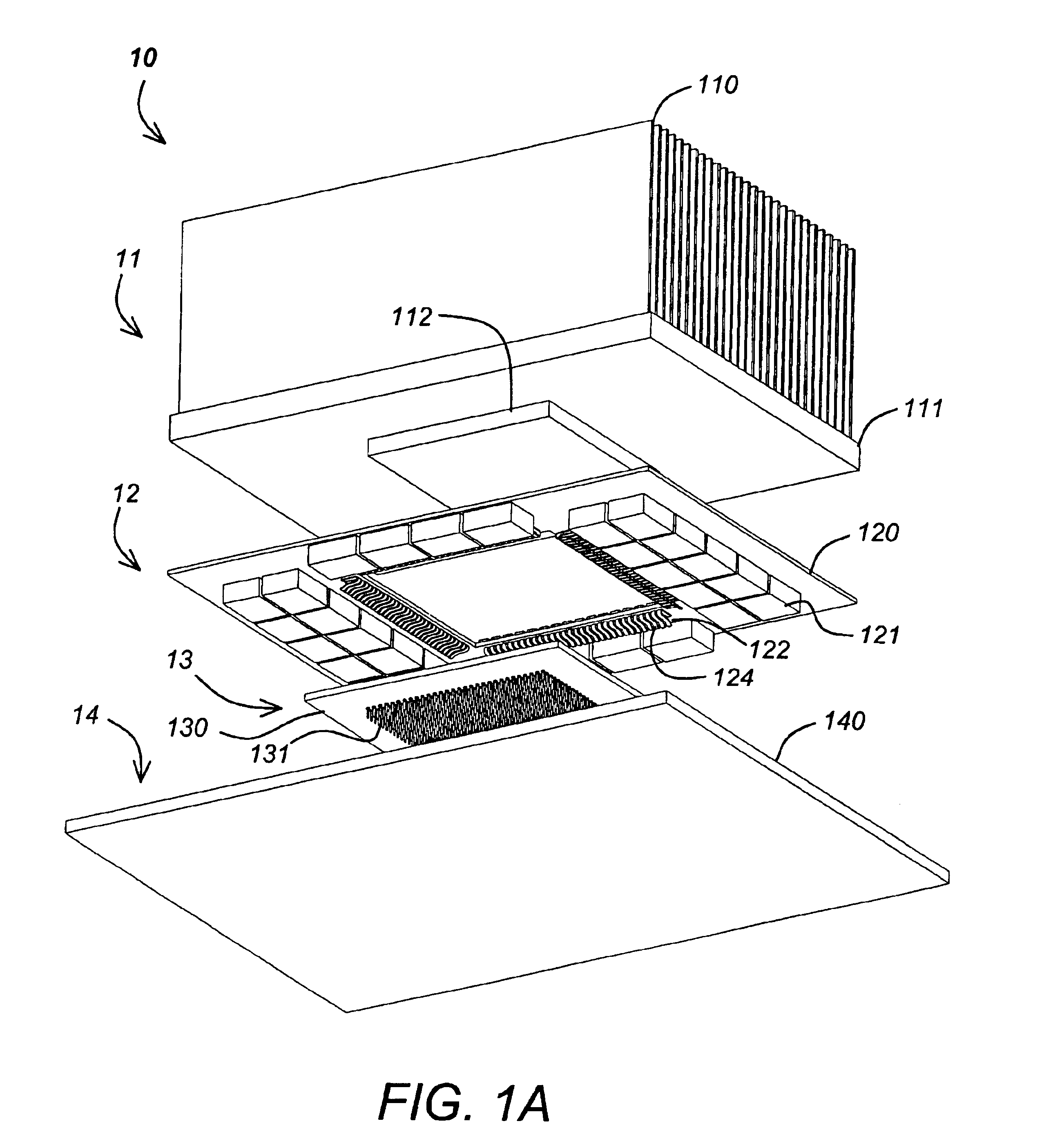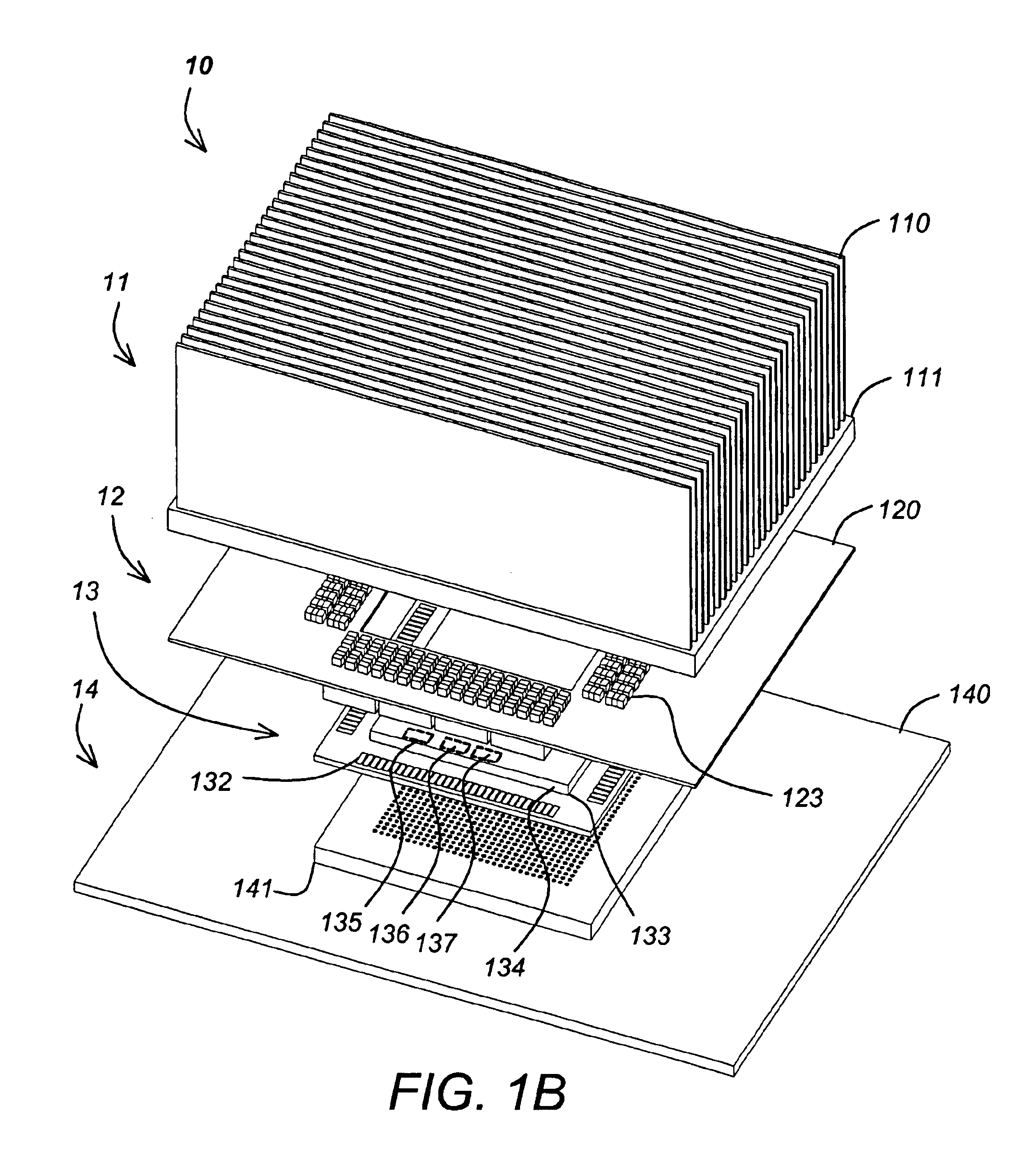Ultra-low impedance power interconnection system for electronic packages
a technology of low impedance and power interconnection, applied in the direction of connection contact material, fixed connection, instruments, etc., to achieve the effect of low impedance, low impedance, and low impedance connection
- Summary
- Abstract
- Description
- Claims
- Application Information
AI Technical Summary
Benefits of technology
Problems solved by technology
Method used
Image
Examples
Embodiment Construction
In the following description, reference is made to the accompanying drawings which form a part hereof, and which is shown, by way of illustration, several embodiments of the present invention. It is understood that other embodiments may be utilized and structural changes may be made without departing from the scope of the present invention.
The present invention describes a low impedance interconnection system operably placed between the two substrates whereby the interconnect is either placed to one side of the device or devices or the interconnect system circumferentially surrounds these elements.
When a load change occurs in operation on one of these devices, a voltage will occur across the interconnect that can be described as shown below: Δ V=L∂IStep∂t+RIStep
wherein ΔV is the voltage across the interconnection system, L is the series loop inductance of the interconnect, R is the interconnect resistance, and Istep is the step-change in load current.
As shown above, the output vo...
PUM
 Login to View More
Login to View More Abstract
Description
Claims
Application Information
 Login to View More
Login to View More - R&D
- Intellectual Property
- Life Sciences
- Materials
- Tech Scout
- Unparalleled Data Quality
- Higher Quality Content
- 60% Fewer Hallucinations
Browse by: Latest US Patents, China's latest patents, Technical Efficacy Thesaurus, Application Domain, Technology Topic, Popular Technical Reports.
© 2025 PatSnap. All rights reserved.Legal|Privacy policy|Modern Slavery Act Transparency Statement|Sitemap|About US| Contact US: help@patsnap.com



